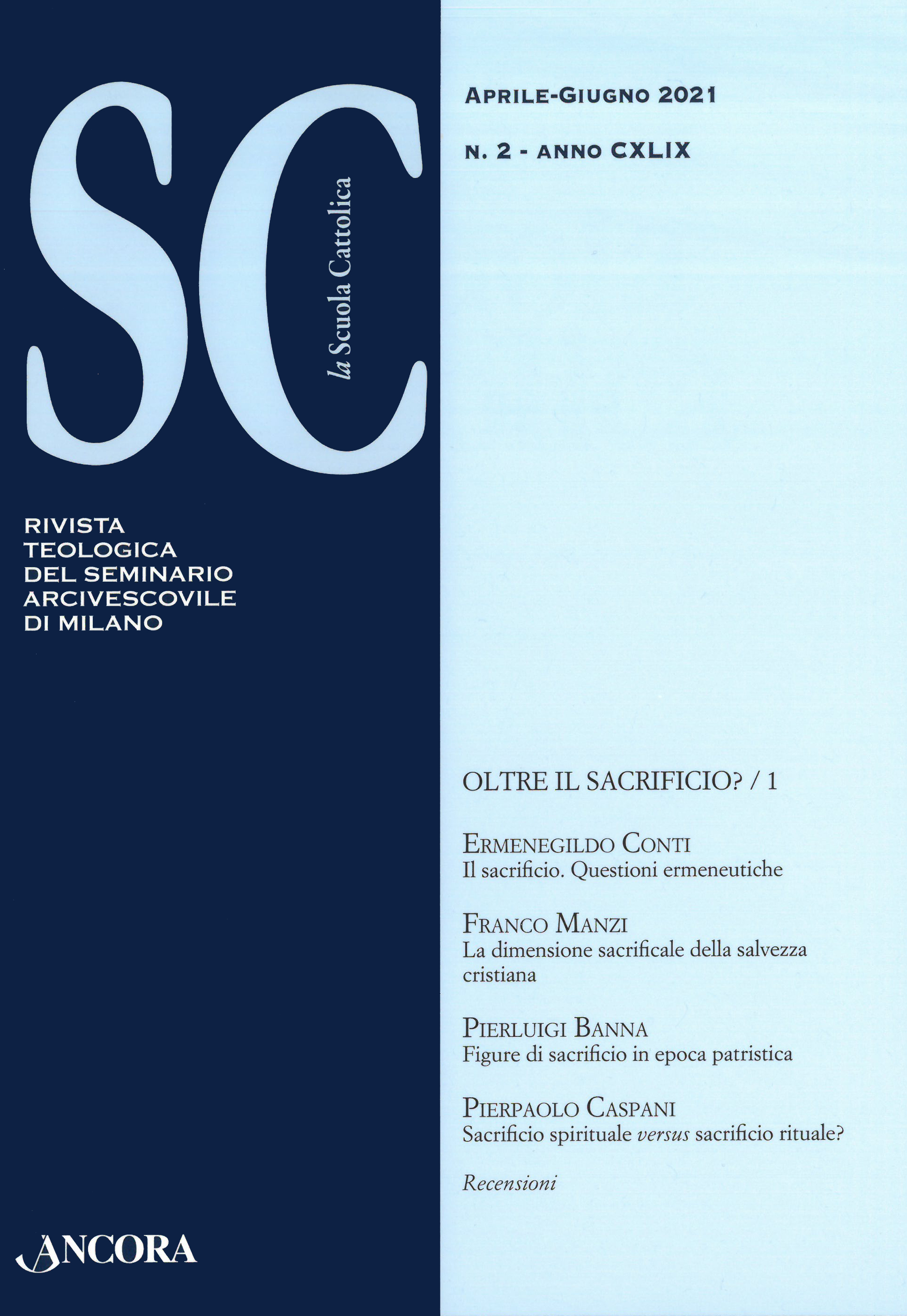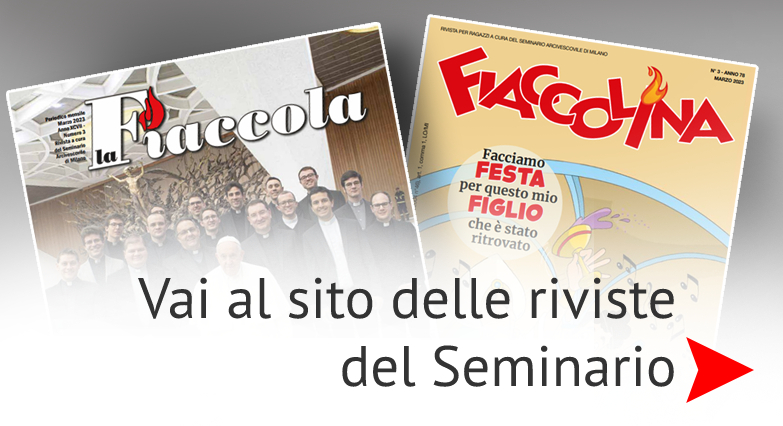
Sommari:
Introduzione. PIERPAOLO CASPANI, Oltre il sacrificio?, 207-220
ERMENEGILDO CONTI, Il sacrificio come chiave interpretativa dell’azione salvifica divina? Questioni ermeneutiche, 221-250
L’articolo prende avvio dall’interrogativo se il sacrificio possa essere assunto come categoria interpretativa dell’opera salvifica divina. La ricerca (di carattere ermeneutico) si concentra innanzitutto sulle condizioni che rendono possibile una rilettura coerente dell’iniziativa di Dio; successivamente su quanto il sacrificio sia in grado di soddisfare le condizioni delineate. In un secondo tempo il saggio richiama le coordinate culturali dell’uso attuale, ordinario e cristiano, del termine, capaci da fungere da precomprensioni in grado di influenzare ogni approccio al tema. Infine, la terza tappa, partendo dall’esigenza di far convergere le due prospettive, mostra le difficoltà insite nell’uso di un vocabolo ormai molto distante dal significato originario e spesso incapace di esplicitare la vera accezione cristiana che vorrebbe indicare.
This article starts off by asking if Sacrifice may be assumed as an interpretative category in the Divine saving work. This research (of a hermeneutical nature) concentrates above all on the conditions which make a coherent rereading of God’s initiative possible; and subsequently on how much the term Sacrifice may be able to satisfy these delineated conditions. Secondly the
article recalls the Christian and every-day coordinates of the term in present use, capable of conditioning the creation of preconceived ideas which influence every approach to the topic. Finally, the third stage, which meets the need to bring the two viewpoints together, shows the implicit difficulties in using a word distant from its original meaning and often unable to express the true Christian meaning it was intended to indicate.
FRANCO MANZI, «Per mezzo di lui offriamo a Dio un sacrificio di lode». La dimensione sacrificale della salvezza cristiana, 251-288
Il presente studio teologico-biblico, focalizzato sulla Lettera agli Ebrei, mostra come il linguaggio sacrificale sia stato in grado, alle origini del cristiane simo, di comunicare il valore salvifico della vita e specialmente della morte di Cristo e, quindi, di un’esistenza vissuta «in memoria di» lui. L’indagine lascia emergere come il linguaggio sacrificale del NT, che ha pervaso soprattutto la liturgia eucaristica, rimane capace di comunicare aspetti fondamentali della soteriologia cristiana. Per facilitare la mediazione culturale del linguaggio sacrificale, il saggio individua l’originalità del sacrificio esistenziale, personale e “spirituale” di Cristo e dei cristiani, che in modo creativo vi partecipano nell’eucaristia e nella vita.
The present biblical theological study, focused on the Letter to the Hebrews, shows how sacrificial language was able, at the origins of Christianity, to communicate the salvific value of the life and especially of the death of Christ and, consequently, of an existence lived «in memory of» him. This investigation brings out how the sacrificial language of the NT, which has pervaded above all the Eucharistic liturgy, remains capable of communicating fundamental aspects of Christian soteriology. With a view to facilitating the cultural mediation of sacrificial language, this essay identifies the originality of the existential, personal and “spiritual” sacrifice of Christ and of Christians who, in a creative way, participate in the Eucharist and in life.
PIERLUIGI BANNA, Figure di sacrificio in epoca patristica, 289-318
L’uso del linguaggio sacrificale è dato ampiamente attestato nei primi autori cristiani per descrivere la morte redentrice di Cristo e la morale dei cristiani. L’articolo intende mettere in luce le strategie ermeneutiche attuate per disambiguare il sacrificio di Cristo e dei cristiani da connessioni con la ritualità giudaica e con la superstizione pagana. Dall’epoca patristica, è perciò
possibile ricavare alcuni criteri da offrire alla ricerca teologica odierna sull’utilizzo dei riferimenti al mondo dei sacrifici nell’annuncio della fede e della morale cristiane.
The use of sacrificial language is a given widely certified by the first Christian authors to describe the redeeming death of Christ and of Christian moral behaviour. This article aims to highlight the hermeneutical strategies employed in dissociating the sacrifice of Christ and of Christians from the connections with Jewish ritual and pagan superstition. From the Patristic
period onwards, it is therefore possible to find some criteria to offer to today’s theological research on the use of the references to the world of sacrifices in the proclamation of the faith and that of Christian morals.
PIERPAOLO CASPANI, Sacrificio spirituale versus sacrificio rituale?, 319-351
A fronte della diffusa tendenza a svalutare il sacrificio rituale a favore del sacrificio spirituale, l’articolo prende in esame anzitutto la riflessione di L.-M. Chauvet che, almeno in parte, ripropone questo orientamento. Dopo aver recensito la decisa reazione di E. Jüngel a una lettura quasi esclusivamente etica del sacrificio, il contributo prende in esame quanto A. Schmemann propone sul tema. La raccolta dei dati emersi dall’analisi di questi Autori prelude alla messa a fuoco del rapporto tra sacrificio come evento e sacrificio come rito. La conclusione rilancia alcune prospettive aperte dalla ricerca svolta.
Considering the widespread tendency of discrediting ritual sacrifice in favour of spiritual sacrifice, this article examines above all the reflection of L.-M. Chauvet who, at least partly, reproposes this orientation. Having reviewed the strong reaction of E. Jüngel to an almost exclusively ethical interpretation of sacrifice, this paper examines that which A. Schmemann proposes on the subject. The collection of data which emerges from the analysis of these authors constitutes a prelude to a more focused examination of the relationship between sacrifice as an event and sacrifice as a rite. The conclusion proposes some new lines of thought opened up by this present research.

